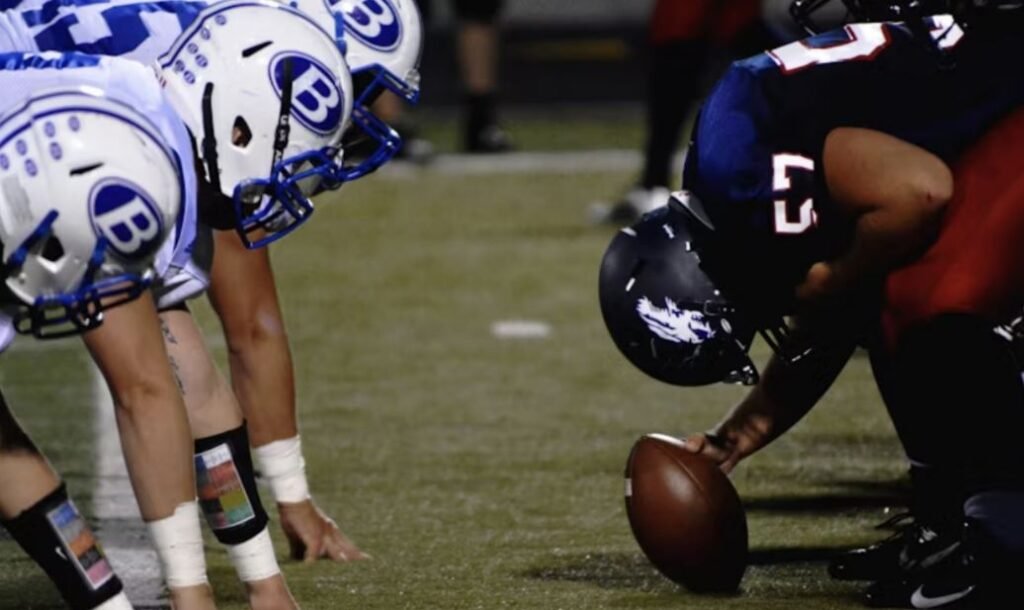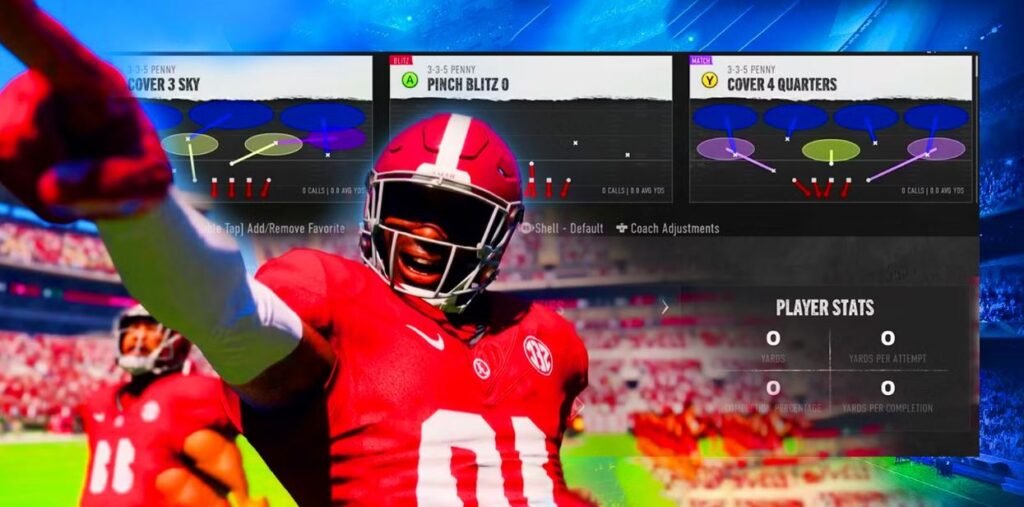Football games are divided into quarters, with each quarter representing a specific segment of game time. The length of a quarter can vary depending on the level of play, such as high school, college, or professional football. How long is a football quarter, and what affects its duration? In this article, we’ll explore the standard timing for football quarters across different leagues, what factors can affect how long quarters last, and how time management plays a role in the overall game.
Standard Quarter Lengths at Different Levels of Football
The length of a football quarter varies by level, with each league following a specific set of rules regarding game timing.
High School Football
In high school football, each quarter is 12 minutes long. The game consists of four quarters, resulting in 48 minutes of total game time. While this may seem relatively short, the actual time spent at a high school football game is often around 2 to 2.5 hours, due to clock stoppages, timeouts, and other game events.
College Football
In college football, quarters are 15 minutes long, making the total regulation game time 60 minutes. The clock stops for various reasons throughout the game, including incomplete passes, timeouts, and first downs, which often extends the actual time spent watching a college game to around 3 to 3.5 hours.
NFL (Professional) Football
In the NFL, quarters are also 15 minutes long, totaling 60 minutes of regulation play. However, professional games typically last about 3 to 3.5 hours, due to additional factors like TV timeouts, commercial breaks, and replay reviews. The NFL also has a two-minute warning at the end of the second and fourth quarters, which adds another clock stoppage, impacting the overall game time.
Factors Affecting the Length of a Football Quarter
While the official length of a quarter is consistent within each level, several factors can influence how long a quarter actually takes to complete. Here are some of the primary factors that affect the duration of football quarters:
1. Clock Stoppages
In all levels of football, the game clock stops for certain events, which can extend the duration of a quarter. Common reasons for clock stoppages include:
- Incomplete Passes: When a pass is incomplete, the clock stops until the ball is snapped for the next play.
- Out of Bounds: If a player goes out of bounds, the clock stops until the ball is placed back in play.
- First Downs: In college and high school football, the clock stops briefly for first downs to reset the chains, after which the clock restarts.
- Timeouts: Each team has three timeouts per half, and the clock stops for the duration of the timeout. Timeouts are often used strategically to stop the clock during critical moments.
2. Penalties and Referee Rulings
Penalties and referee rulings can also slow down the pace of a quarter. When a penalty occurs, referees stop the clock to assess the infraction, announce the ruling, and enforce the penalty yardage. Additionally, reviews or discussions among referees can add time, particularly in the NFL, where certain plays are eligible for official review.
3. Replay Reviews (College and NFL)
Replay reviews are a significant factor in college and NFL games. When a play is reviewed, the clock stops while officials evaluate the footage to confirm or overturn the call. This process can add a few minutes to a quarter, especially if there are multiple reviews in a single quarter. Replay reviews are less common in high school football, where video review technology is not typically used.
4. TV Timeouts and Commercial Breaks
In televised college and NFL games, TV timeouts are scheduled throughout the game, particularly after scoring plays, punts, and changes of possession. These breaks allow networks to show commercials, which can lengthen the duration of a quarter. These breaks typically last around 2-3 minutes, contributing to the overall length of professional and televised college games.
5. Injuries
Injuries also impact the length of a quarter, as the game clock stops when a player is injured on the field. Depending on the severity of the injury, this delay can range from a few seconds to several minutes. Medical personnel may need time to assess and attend to the player, which can add to the quarter’s duration.
Game Clock vs. Play Clock
In football, both the game clock and the play clock influence the pace of the game. Understanding the difference between these two clocks helps clarify the timing structure of a football quarter:
Game Clock
The game clock tracks the official time of each quarter. It starts and stops based on specific events, such as timeouts, out-of-bounds plays, and incomplete passes. The game clock is crucial in determining the flow of the quarter and the overall game length.
Play Clock
The play clock is the time limit for the offense to snap the ball before incurring a delay of game penalty. In the NFL and college football, the play clock is typically 40 seconds following the previous play or 25 seconds after certain stoppages, such as penalties or timeouts. In high school football, a 25-second play clock is commonly used. The play clock helps regulate the pace of each play, influencing the game’s tempo and duration.
Two-Minute Warning (NFL Only)
In the NFL, the two-minute warning occurs at the end of the second and fourth quarters. This is a mandatory timeout that stops the clock, providing teams with an opportunity to strategize during the game’s final minutes. The two-minute warning can lead to additional clock stoppages as teams use their remaining timeouts and make quick adjustments, adding time to the quarter and heightening the game’s intensity.
Timing Differences Across Levels
High School Football Timing
In high school football, quarters are shorter at 12 minutes, but the clock operates similarly to other levels. Many high school leagues implement a running clock mercy rule in the second half if one team gains a substantial lead, reducing the number of clock stoppages and shortening the quarter’s length. The use of running clocks is less common in close or competitive games.
College Football Timing
College football quarters are 15 minutes long, and the clock stops for first downs until the chains are reset, which is unique to college football. This rule can extend quarters, particularly if there are multiple first downs in quick succession. College games also include a TV timeout structure, which lengthens each quarter’s duration in televised matchups.
NFL Timing
The NFL’s 15-minute quarters and frequent clock stoppages due to replays and commercials make it the longest format of the three levels. With the addition of the two-minute warning and strategic timeouts, NFL quarters often last well beyond the actual 15 minutes of game time. NFL games are designed with TV broadcasts in mind, contributing to an average game time of around 3 to 3.5 hours.
How Long is a Quarter Really?
Although the official time for each quarter is set, the real length varies due to stoppages and game flow. Here’s a summary of how long quarters typically last in real-time at different levels:
- High School Football Quarter: Around 20-25 minutes of real time
- College Football Quarter: Around 30-35 minutes of real time
- NFL Football Quarter: Around 35-40 minutes of real time
These estimates depend on the number of clock stoppages, timeouts, and additional factors like replays or TV timeouts.
FAQs
Why are NFL and college quarters longer than high school quarters?
NFL and college quarters are 15 minutes to accommodate a higher level of play, complex strategies, and longer drives. These levels also involve more commercial breaks and official reviews, requiring additional time. High school quarters are 12 minutes to fit the pace of play at the high school level and reduce the physical strain on younger players.
Do all levels of football have four quarters?
Yes, high school, college, and NFL football games are all divided into four quarters. Each quarter represents a segment of game time, with breaks in between for teams to adjust their strategies and rest.
How many timeouts does each team get per quarter?
Teams in high school, college, and NFL football are granted three timeouts per half, not per quarter. These timeouts can be used strategically to stop the clock and adjust plays. Unused timeouts do not carry over into the next half.
Does the clock stop at the end of each quarter?
Yes, the clock stops at the end of each quarter, allowing for a short break. Teams switch ends of the field after the first and third quarters, while halftime occurs between the second and third quarters.
How long does halftime last in football?
In high school football, halftime is typically 15-20 minutes. College and NFL games have a halftime of 20 minutes. Halftime provides players a break, allows teams to make adjustments, and often features entertainment for the fans.
Can football quarters be shortened?
Yes, quarters can be shortened under certain circumstances. For example, a mercy rule with a running clock can reduce the time spent on each quarter in high school football. Coaches may also agree to shorten quarters due to inclement weather or other situations, though this is less common.
Conclusion
In summary, a standard football quarter lasts 12 minutes in high school and 15 minutes in both college and NFL football. However, due to clock stoppages, timeouts, and other factors, the real-time length of each quarter often extends well beyond these official times. Understanding the duration of football quarters at different levels gives fans insight into the structure and pacing of the game. Whether watching high school, college, or NFL football, expect each quarter to take longer than the official clock time, providing an exciting and dynamic experience for players and spectators alike.




